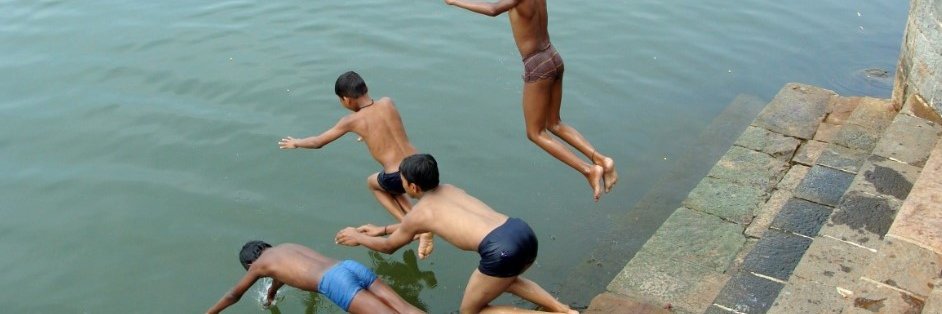- Opinion
A new approach to Peer learning with Comparative Judgement

A few years ago I travelled to our office in Kerala. It was my first time in India and was an unforgettable experience. One day I left the office early and took a Tuk Tuk to the coast for some relief from the heat. The sea was full of children swimming and having fun. Needless to say there wasn't a lifeguard or instructor in sight. Now I am not advocating this lack of oversight as a way forward (!), however there was something compelling about such an obvious example of peer learning.
At a time when resources are stretched and demands on staff are increasing, peer learning offers students the opportunity to learn from each other. The benefits or Peer Learning are professionally researched; however, it is not clear that they have ever been fully realised. The reasons for this are complex, not least that the domain is not a single, undifferentiated educational strategy. It is instead a part of the instructor's tool kit that is used in a multitude of diverse ways. In many ways the term 'peer learning' remains abstract, however with RM Compare we can start to see a new way to leverage this powerful teaching technique.
Peer-to-peer assessment is widely acknowledged as one of the most powerful ways in which we can help facilitate learning and boost student learning and attainment. However, it can be difficult to organise and run at scale and often students find more traditional approaches involving example work and marking rubrics counter-intuitive.
RM Compare solves these issues by providing a quick and intuitive way to set-up and run peer assessment, whether this is just for a small group of students, a class or across a whole cohort.
What's more, as RM Compare is available on any internet connected device, peer assessment can be easily and successfully delivered to students working in the same classroom, across a campus, at home, in the work-place, or a mixture of these.
Students find the process of making multiple pair-wise comparative judgements through RM Compare very intuitive, with the the judgement process giving them intutive insight into 'what good looks like' in relation to the work being evaluated. Students can also leave feedback on each piece of work they review, which is then fed back to the author of the work automatically at the end of the session, providing multiple perspective views on how the work could be improved.
Peer assessment delivered via RM Compare is particularly helpful when students are undertaking open-ended work, such as extended writing, planning or project work. It is also very useful for intuitively supporting the development of soft skills such as collaboration, critical thinking or creativity, with the pair-wise comparisons providing an intuitive and easily accessible approach to self-evaluation.
The approach has also been used in a wide variety of different subject areas, curriculum contexts and education phases from schools, through to undergraduate/post graduate studies and work-based learning. An excellent piece of research completed recently by Nichol & McCullum (2022)* gives an up to date view on where this type of work is at the moment.
*David Nicol & Suzanne McCallum (2022) Making internal feedback explicit: exploiting the multiple comparisons that occur during peer review, Assessment & Evaluation in Higher Education, 47:3, 424-443, DOI: 10.1080/02602938.2021.1924620
Promote better self-evaluation with Peer Assessment
Gather and share feedback from students about their peers’ work. Help 'learners to learn' through a highly collaborative and engaging assessment and feedback process.

How might we use RM Compare for Peer Learning?
Why use RM Compare for Peer Assessment?
Research has shown that there are FOUR main pedagogical benefits to using RM Compare to run ACJ based peer assessment:
- RM Compare exposes them to a wide variety of their peers' work, potentially across much large cohorts of students than would normally be practicable;
- The process of making judgement decisions helps student internalise the qualities and traits of what 'good' looks like, reinforcing learning in the classroom;
- As they provide feedback to their peers through RM Compare students verbalise their thoughts, solidifying thoughts and opinions in their own minds regarding the qualities and traits of the work;
- As they receive the feedback from their peers, it becomes a formative learning opportunity enabling the students to take, evaluate and apply the comments in the feedback to their own work and future learning.
But does anyone actually use RM Compare for Peer Learning?
Yes! - lots. And across different age ranges and settings. We have Universities and Schools using RM Compare for Peer Learning across the world. Some of these use it as an in class activity, others for remote, asynchronous learning. It has been used in a wide range of subjects using a large number of different mediums including text, images, video and sound.
Is there any ongoing research?
We have a bunch of research projects ongoing, for example
- Read about the work being undertaken in Sweden by Dr. Eva Hartel from the KTH Royal Institute for Technology, where RM Compare has been used to support both teacher and peer assessment - read the article here
- Read about the work that teachers are doing in Haninge Municipality in Sweden, using RM Compare to support peer assessment in STEM subjects with middle school students - read the article here
